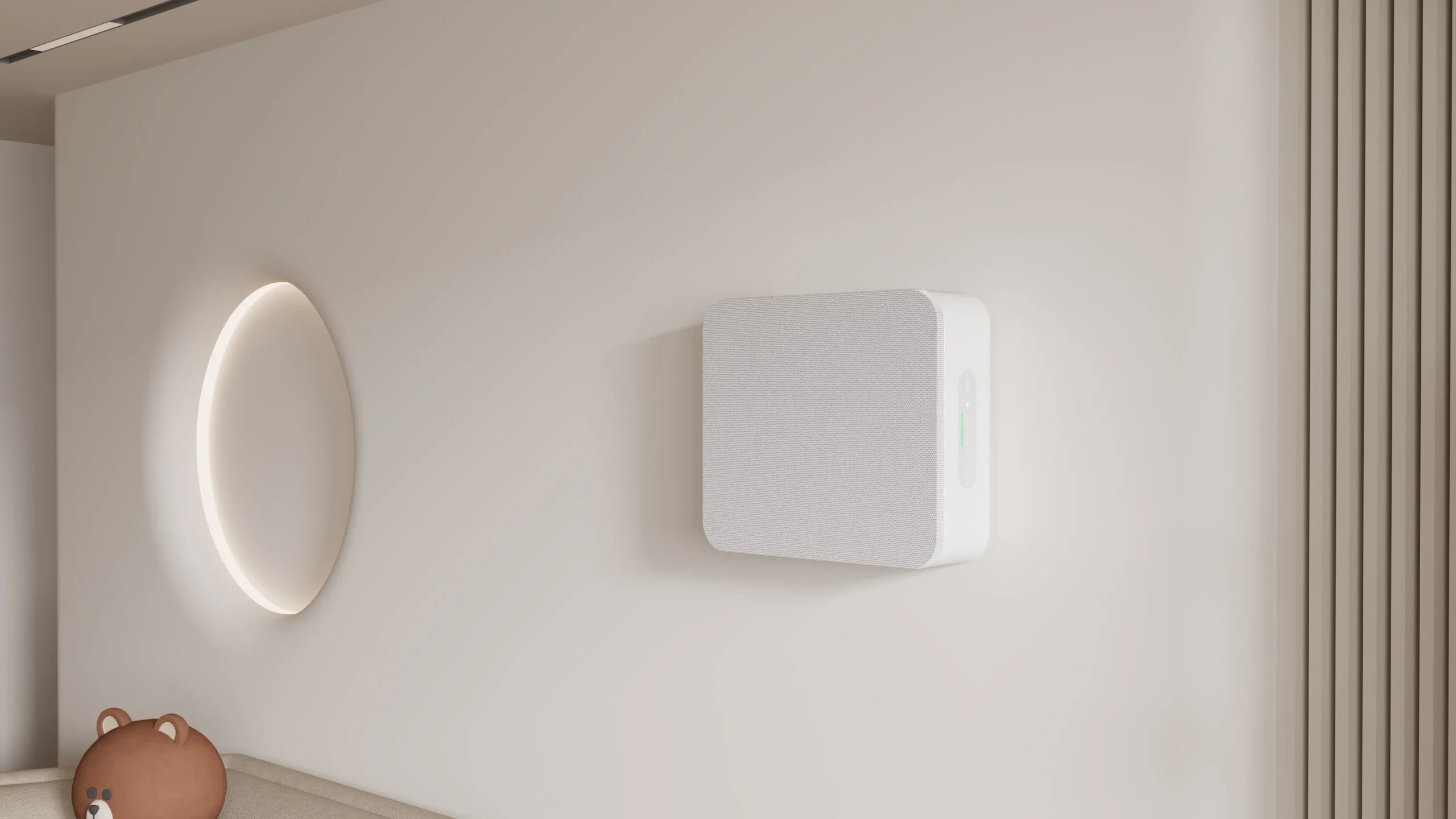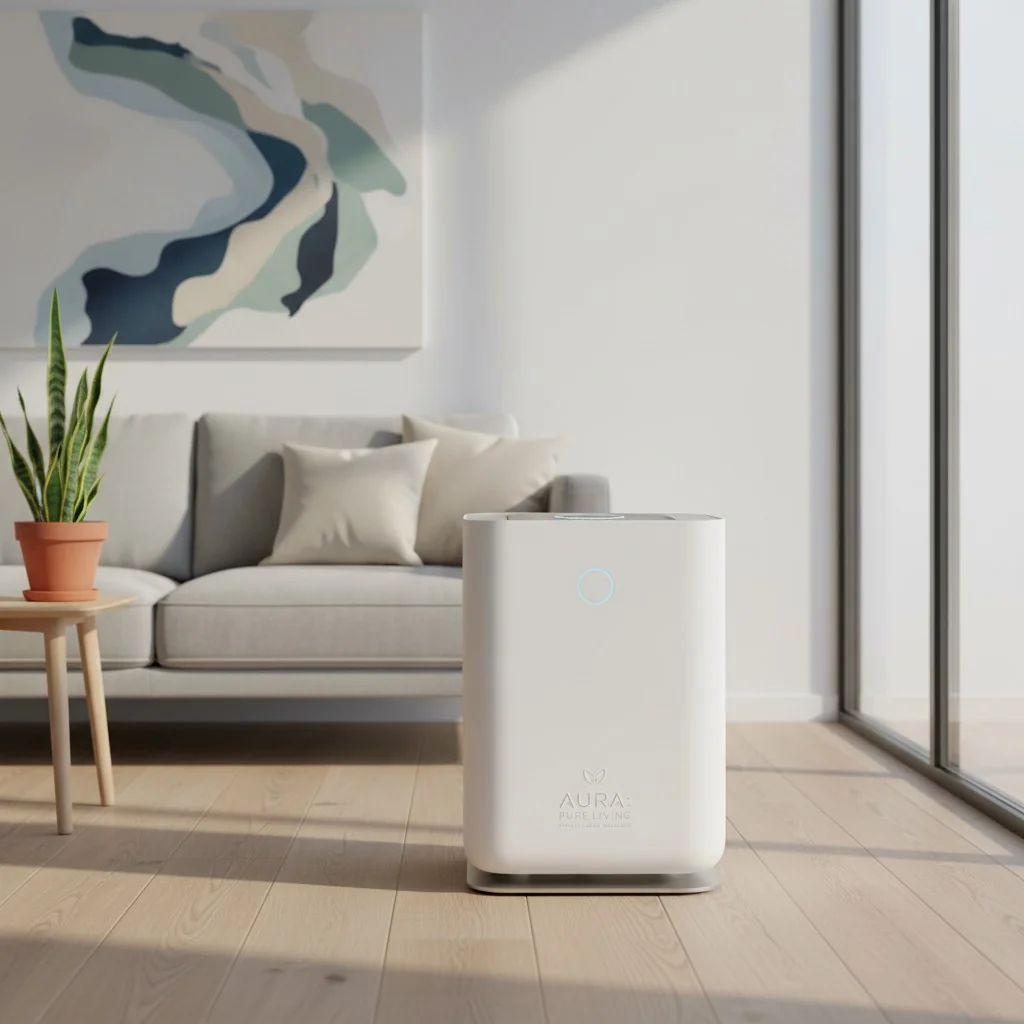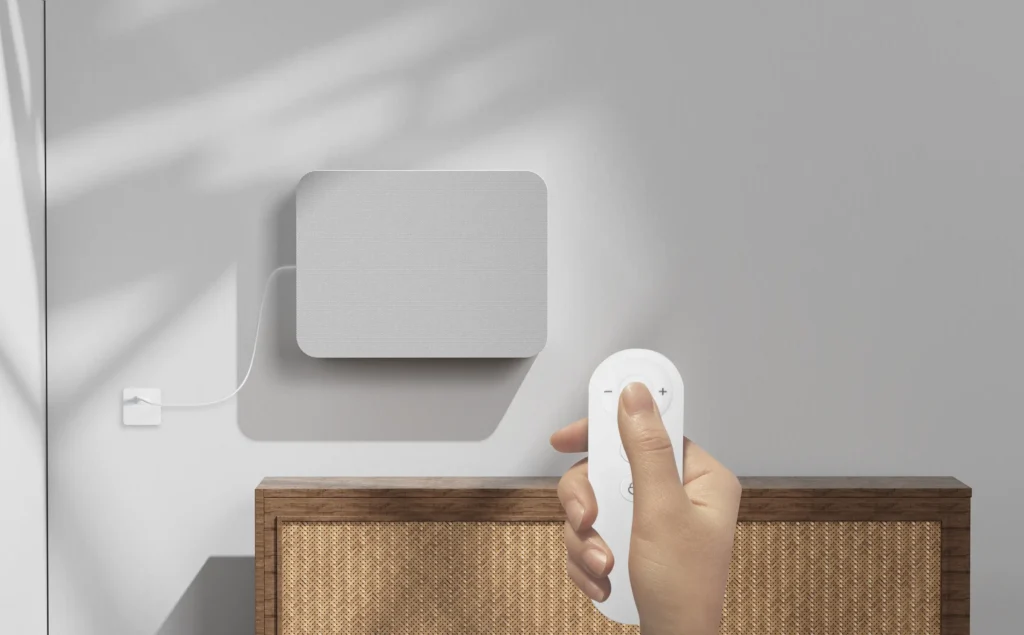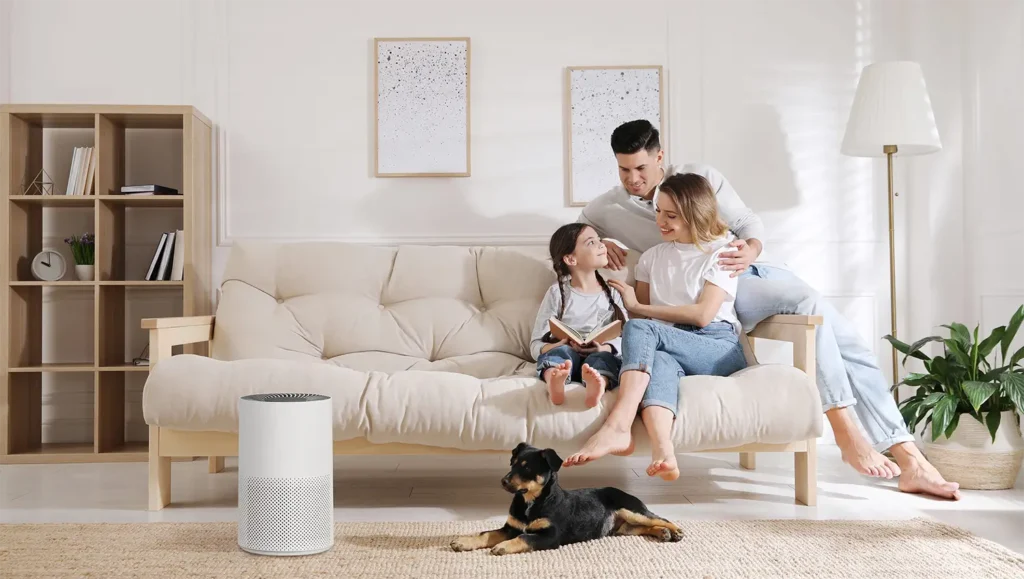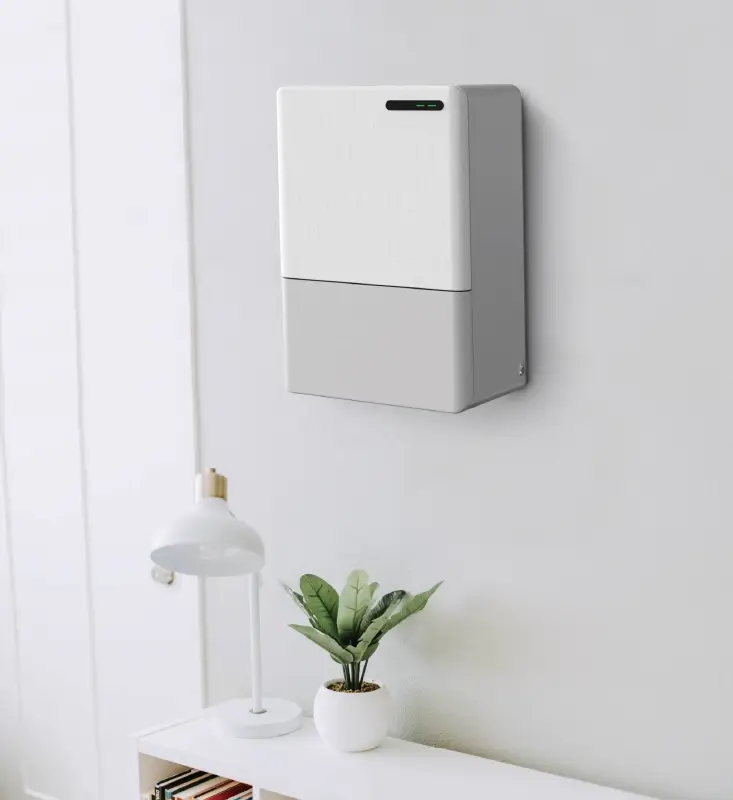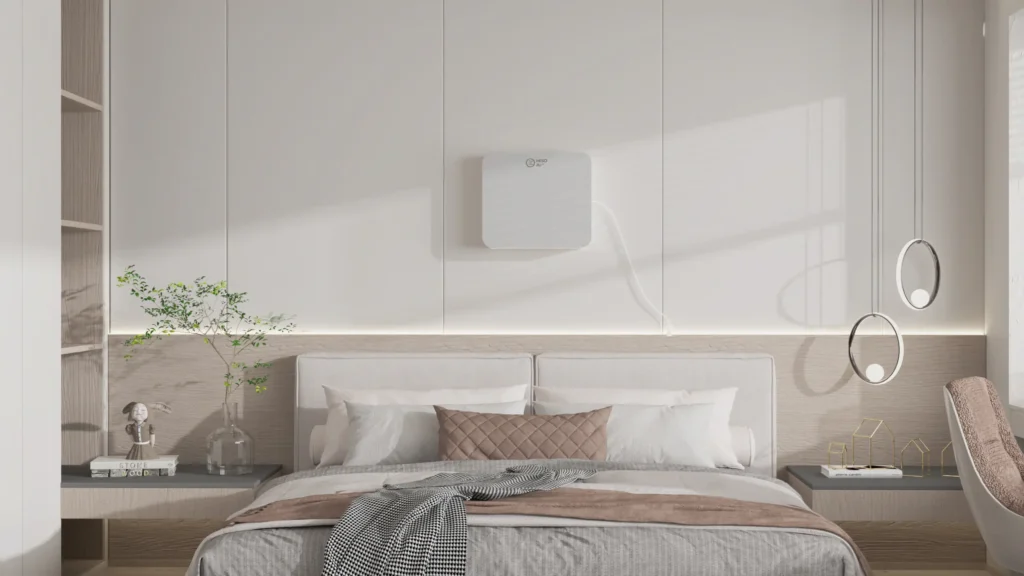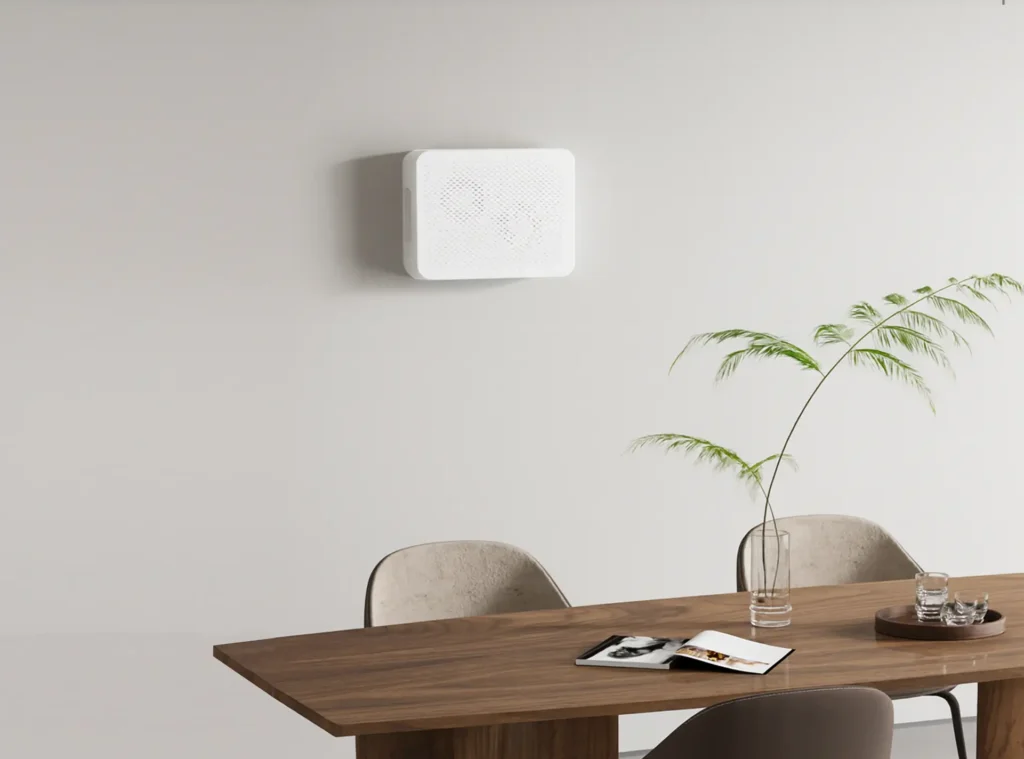The excitement of moving into a new home is palpable. The fresh paint, the plush new carpets, the gleaming new furniture – it all contributes to a sense of new beginnings and a pristine environment. However, there's a hidden truth behind that distinctive "new home smell" that often goes unnoticed. Far from being a sign of cleanliness, this scent is actually the result of various building materials and furnishings releasing Volatile Organic Compounds (VOCs) into the air. These invisible airborne chemicals can significantly impact indoor air quality, posing potential health risks to occupants.
This comprehensive guide aims to demystify VOCs in new homes, providing you with essential knowledge to understand their presence and effects. More importantly, we will equip you with the insights needed to select the most effective air purifier, transforming your new living space into a truly healthy and safe sanctuary. By the end of this article, you'll be well-prepared to make informed decisions that safeguard your family's well-being, ensuring that your new home is not just beautiful, but also breathable.
What are VOCs and Why are They a Problem in New Homes?
Defining VOCs
Volatile Organic Compounds (VOCs) are a diverse group of organic chemicals that readily evaporate at room temperature, releasing gases into the air. These compounds are characterized by their high vapor pressure and low water solubility. While some VOCs occur naturally, many are human-made chemicals found in a vast array of products and materials used in modern construction and home furnishings. Common examples of VOCs include formaldehyde, benzene, toluene, xylene, and a variety of other hydrocarbons, aldehydes, alcohols, and organic acids. The presence and impact of VOCs are highly dependent on their concentration in the air and the duration of exposure.
The "Off-Gassing" Effect in New Homes
New homes, with their fresh construction and new furnishings, are particularly susceptible to elevated VOC levels due to a phenomenon known as "off-gassing" or "outgassing". This process involves the gradual release of gases and chemicals embedded within solid materials into the surrounding air. The "new home smell" that many people associate with a recently built or renovated property is, in fact, the olfactory signature of these VOCs being emitted.
Numerous sources contribute to VOC off-gassing in new homes:
- Paints and Finishes: Freshly applied paints, varnishes, lacquers, and sealants are significant contributors to VOC emissions. Oil-based products, in particular, are known for their prolonged off-gassing periods.
- Flooring and Carpets: New flooring materials, including vinyl, laminate, and especially new carpets, can release a variety of VOCs from their adhesives, backings, and synthetic fibers.
- Adhesives and Building Materials: Glues, caulks, and other adhesives used in construction, as well as composite wood products like particleboard, plywood, and medium-density fiberboard (MDF), are major sources of formaldehyde and other VOCs.
- Furniture: New furniture, especially those made from composite wood or treated with certain finishes, can off-gas VOCs for extended periods.
Indoor VOC levels can be alarmingly high in new, tightly sealed homes, often reaching concentrations up to 10 times greater than outdoor levels. This is primarily due to the reduced air exchange in modern, energy-efficient buildings, which traps pollutants indoors. While VOC levels tend to decrease over time as materials off-gas, studies suggest it can take up to two years for VOC concentrations in a newly built house to drop to levels comparable to a 5-10 year old home.
Preocupações com a saúde
Exposure to VOCs, even at low levels, can lead to a range of health issues, with the severity depending on the specific compound, its concentration, and the duration of exposure. Both short-term and long-term health effects are a concern:
- Short-term Effects: Immediate symptoms often include irritation of the eyes, nose, and throat, headaches, dizziness, nausea, and fatigue. For individuals with respiratory conditions like asthma, VOC exposure can worsen symptoms.
- Long-term Effects: Chronic exposure to certain VOCs has been linked to more severe health problems, including damage to the liver, kidneys, and central nervous system. Some VOCs are also suspected or known carcinogens.
Given these potential health risks, understanding and mitigating VOC exposure in new homes is crucial for creating a safe and healthy living environment.
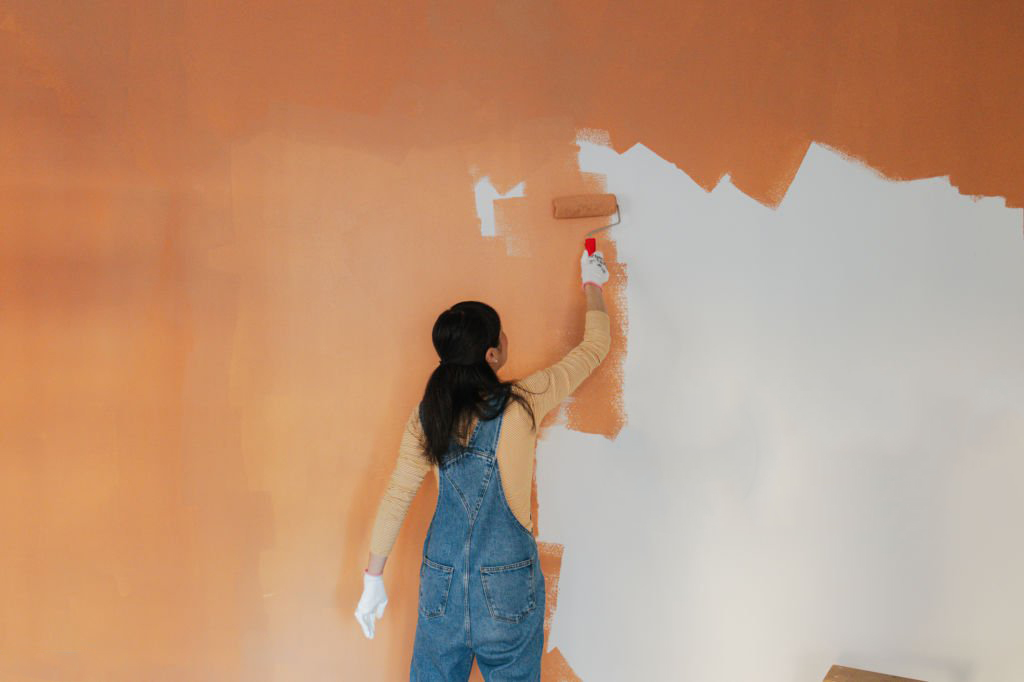
Your First Line of Defense: A 3-Step Strategy to Reduce VOCs
While air purifiers play a crucial role in maintaining healthy indoor air quality, it's important to understand that they are the final step in a comprehensive strategy to combat VOCs. A proactive, multi-pronged approach is always the most effective way to minimize exposure to these harmful chemicals. Here's a 3-step strategy to significantly reduce VOCs in your new home:
Step 1: Source Control
The most effective way to reduce VOCs is to prevent them from entering your home in the first place. This involves making conscious choices about the materials and products you bring into your living space. By controlling the source, you can drastically lower the overall VOC burden.
- Choose Low-VOC or No-VOC Products: When selecting paints, sealants, adhesives, and building materials, prioritize those explicitly labeled as low-VOC or no-VOC. Many manufacturers now offer environmentally friendly alternatives that significantly reduce off-gassing.
- Opt for Solid Wood Furniture: Whenever possible, choose solid wood furniture over composite wood products like particleboard, plywood, or MDF. These engineered wood products often contain formaldehyde-based glues that continuously off-gas VOCs. If composite wood is unavoidable, look for products certified to meet stringent emission standards.
- Consider Pre-Off-Gassed Items: For new furniture, rugs, or mattresses, consider purchasing floor models or used items that have already had a chance to off-gas in a well-ventilated environment. If buying new, ask retailers about their off-gassing policies or if items can be aired out before delivery.
Step 2: Ventilation
Ventilation is key to diluting indoor air pollutants, including VOCs. By introducing fresh outdoor air and expelling stale indoor air, you can significantly reduce the concentration of airborne chemicals.
- Air Out New Items: Before bringing new furniture, rugs, or mattresses into your home, unwrap them and allow them to air out in a garage, on a porch, or in another well-ventilated area for several days or even weeks if possible. This allows a significant portion of initial off-gassing to occur outside your living space.
- Regularly Open Windows and Doors: Create cross-ventilation by opening windows and doors on opposite sides of your home, especially during the initial weeks and months after moving in. Even short periods of ventilation can make a difference.
- Utilize Exhaust Fans: Always use kitchen and bathroom exhaust fans during and after cooking, showering, or cleaning. These fans help to remove moisture and airborne pollutants, including VOCs, from these high-emission areas.
Step 3: Air Purification
Even with diligent source control and ventilation, some VOCs will inevitably remain in your indoor environment. This is where a purificador de ar de alta qualidade becomes an invaluable tool. An purificador de ar acts as a continuous, 24/7 solution, actively capturing and neutralizing remaining VOCs, ensuring a healthier and safer living space. It serves as a crucial line of defense, especially in new homes where off-gassing can persist for an extended period.

How to Choose the Best Air Purifier for VOCs: A Buyer's Guide
Selecting the right air purifier for VOCs in a new home requires understanding the specific technologies that are effective against gaseous pollutants. Not all air purifiers are created equal, and many consumer-grade models are primarily designed for particulate matter, not chemical off-gassing. Here’s what to look for to make an informed decision:
The Key Technology: Activated Carbon is Non-Negotiable
When it comes to removing VOCs, odors, and other gaseous pollutants, filtros de carvão ativado are the undisputed champion. This is the single most critical component to look for in an air purifier for a new home.
Activated carbon works through a process called adsorption. Unlike absorption, where a substance is taken into another, adsorption involves gas and odor molecules chemically bonding to the vast network of pores within the carbon material. This porous structure, often compared to a sponge, provides an immense surface area for trapping gaseous contaminants. The more activated carbon a filter contains, the greater its capacity to adsorb VOCs and the longer its effective lifespan.
It is crucial to understand that HEPA filters, while excellent for capturing particulate matter (like dust, pollen, pet dander, and mold spores), are ineffective against gaseous VOCs. HEPA filters physically trap particles, but VOCs are gas molecules that simply pass through the HEPA media. Therefore, a high-quality air purifier for a new home needs both a HEPA filter (for general air purification) and a substantial activated carbon filter (specifically for VOCs).
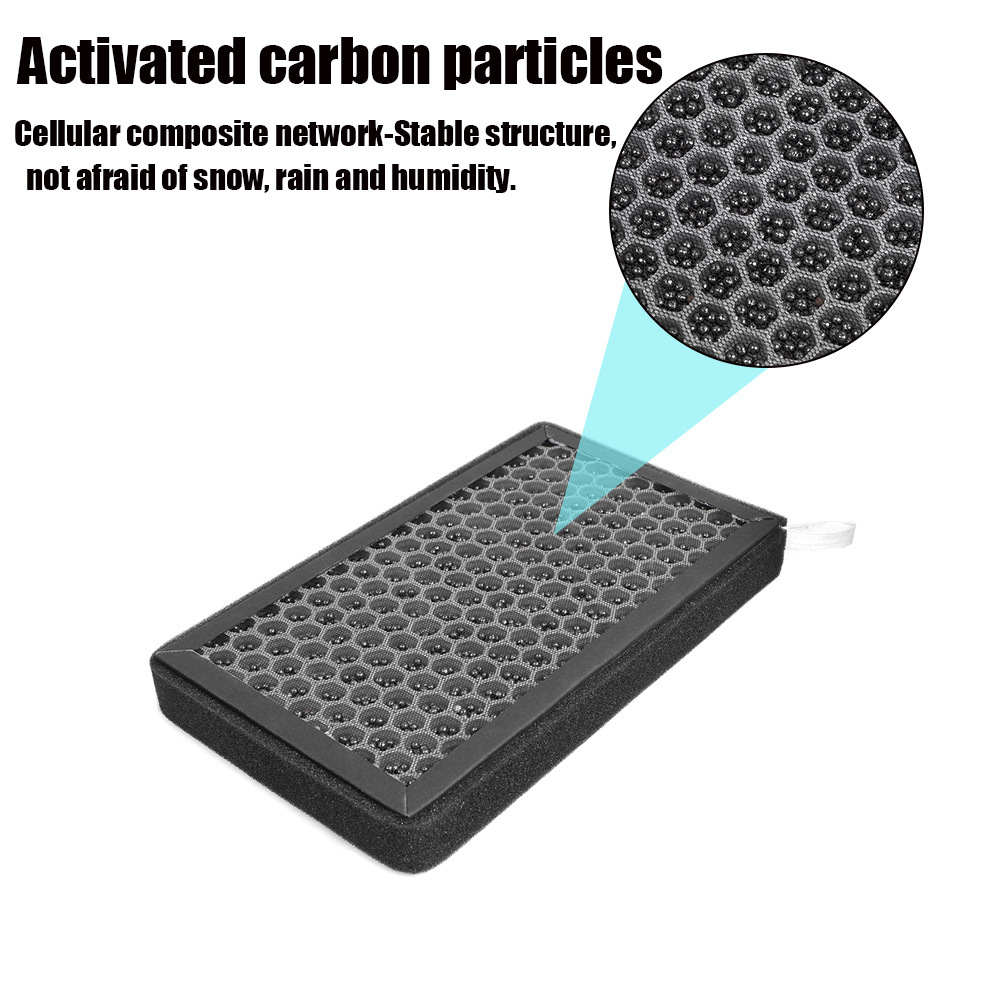
What to Look For:
Amount of Activated Carbon
This is arguably the most important factor when choosing an air purifier for VOCs. The effectiveness and longevity of the VOC removal capability are directly proportional to the amount of activated carbon present. Look for purifiers that contain a significant amount of carbon, ideally in granular or pelletized form, rather than thin, coated carbon pre-filters. While some budget models may have a few ounces, truly effective VOC purifiers will contain at least 2-3 pounds of activated carbon. Heavy-duty, medical-grade models can feature an impressive 12-15 pounds or more, offering superior adsorption capacity and longer filter life.
Room Size Coverage (CADR & ACH)
Ensure the air purifier’s capacity matches the size of the room where it will be used. Two key metrics to consider are:
- Clean Air Delivery Rate (CADR): This metric, typically measured in cubic feet per minute (CFM) or cubic meters per hour (CMH), indicates how quickly the air purifier removes specific pollutants (smoke, pollen, dust) from a room. While CADR primarily relates to particulate removal, a higher CADR generally indicates a more powerful fan, which is beneficial for circulating air through the carbon filter.
- Air Changes per Hour (ACH): This refers to how many times the air in a room is completely replaced by purified air within an hour. For effective VOC removal, aim for an air purifier that can achieve at least 4-5 ACH for your room size. This ensures that the air is frequently passed through the activated carbon filter, maximizing VOC adsorption. Many manufacturers provide recommended room sizes based on these metrics.
Filter Lifespan & Cost
Beyond the initial purchase price, consider the total cost of ownership, which includes the ongoing expense and frequency of filter replacements. Activated carbon filters, especially those with substantial amounts of carbon, can be expensive to replace. However, they also tend to last longer. Some high-end models boast filter lifespans of up to 5 years, while others may require replacement every 6-12 months. Always check the recommended replacement schedule and the cost of replacement filters before purchasing.
Safety Certifications
To ensure the air purifier does not produce harmful byproducts, look for relevant safety certifications. The California Air Resources Board (CARB) certification is particularly important. CARB-certified air purifiers are tested to ensure they produce minimal or no ozone, a lung irritant that can be harmful to human health. HisoAir, for instance, emphasizes the importance of CARB certification for lowering ozone emissions and improving breathing health. Always verify that the model you choose is listed on CARB’s certified air cleaning devices list.
Technologies to Approach with Caution:
While some air purifiers incorporate advanced technologies, certain ones should be approached with caution, especially when the primary concern is VOC removal:
- Ozone Generators: These devices intentionally produce ozone, which is a powerful oxidant that can react with and break down some pollutants. However, ozone itself is a lung irritant and can be harmful to human health, especially for individuals with respiratory conditions. The EPA and other health organizations advise against using ozone-generating air purifiers.
- Ionizers/PlasmaWave/Ionic Purifiers: These technologies work by releasing charged ions into the air, which attach to airborne particles, causing them to fall out of the air or stick to surfaces. While they can be effective for particulate removal, some ionizers can produce ozone as a byproduct. It’s essential to ensure any air purifier with ionization technology is CARB-certified to guarantee low or no ozone emissions.
- Photocatalytic Oxidation (PCO): PCO technology uses UV light and a titanium dioxide catalyst to break down pollutants. While promising in theory, some PCO systems can produce harmful byproducts, including formaldehyde, especially if not properly designed or maintained.
For the safest and most proven results in VOC removal, stick with air purifiers that rely primarily on a robust combination of HEPA filtration for particles and a substantial activated carbon filter for gases and odors.
Top Air Purifier Picks for VOCs in a New Home
Based on the criteria outlined above – particularly the emphasis on substantial activated carbon filtration – here are some top air purifier recommendations for tackling VOCs in a new home. These models are recognized for their effectiveness in gas and odor removal, alongside their overall air purification capabilities.
Best for Heavy-Duty VOC Removal:
These purifiers are designed for serious VOC challenges, featuring large amounts of activated carbon for maximum adsorption capacity.
- Austin Air HealthMate Plus: This model is a long-standing favorite for chemical sensitivity and new home off-gassing. It boasts an impressive 15 pounds of activated carbon and potassium iodide, which enhances its ability to remove a wide range of chemicals, gases, and odors, including formaldehyde. Its robust filter is designed to last up to 5 years under normal residential use, making it a cost-effective long-term solution.
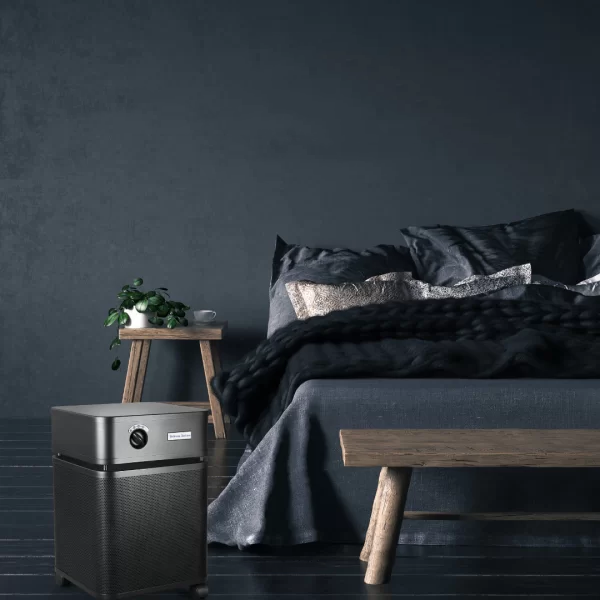
- IQAir GC MultiGas: Considered a medical-grade air purifier, the IQAir GC MultiGas is engineered for broad-spectrum gas and chemical removal. It features 12 pounds of granular activated carbon and chemisorbers, which are specialized media designed to react with and neutralize specific gaseous pollutants. This unit is ideal for individuals with severe chemical sensitivities or in environments with exceptionally high VOC concentrations.
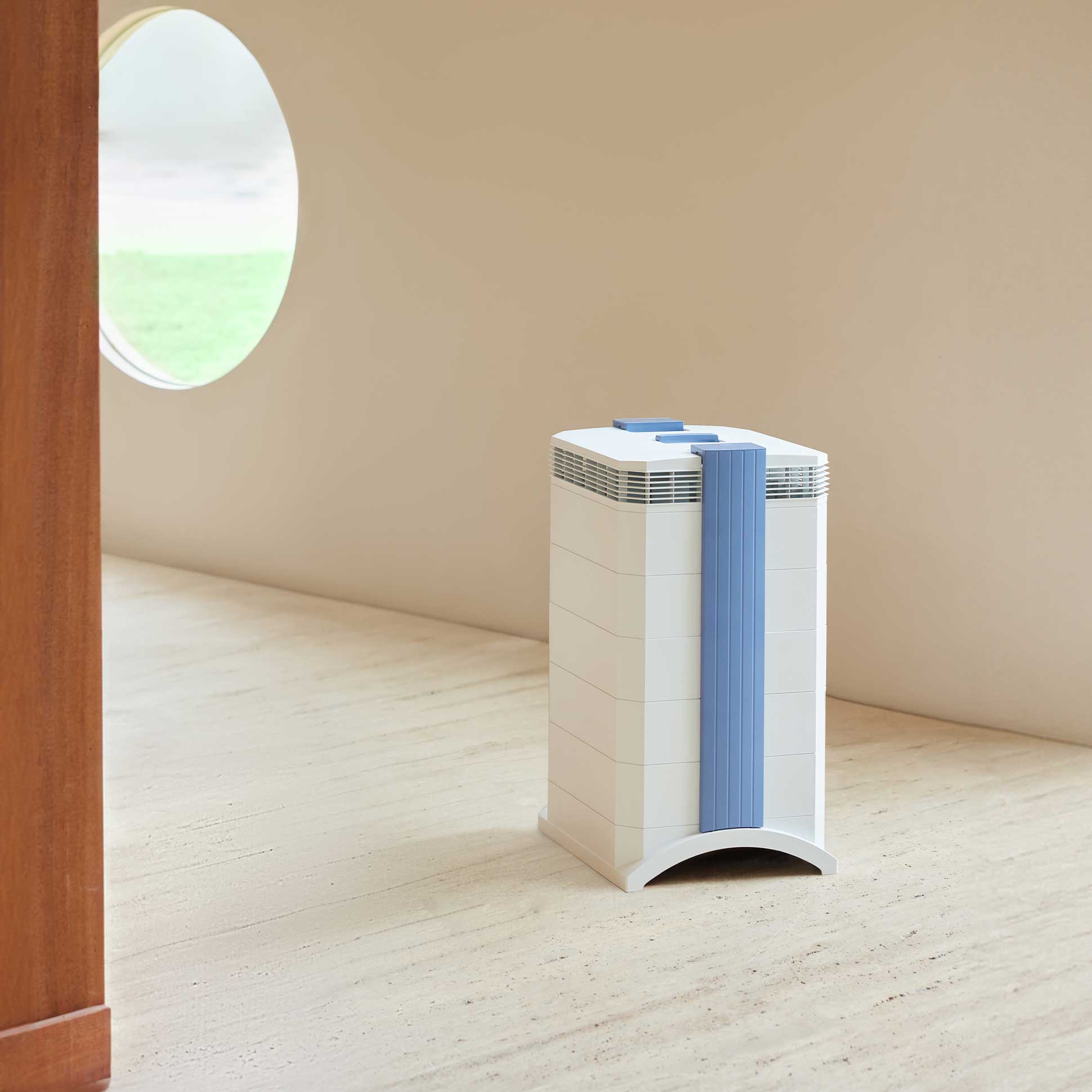
Best for Targeted Formaldehyde Removal:
Formaldehyde is a common and persistent VOC in new homes. Some purifiers offer specialized technology to address this specific chemical.
- Dyson Purifier Formaldehyde Series: Dyson has developed a unique catalytic filter that continuously destroys formaldehyde at a molecular level, rather than just trapping it. This solid-state sensor and catalytic filter never needs replacing, offering a maintenance-free solution for formaldehyde concerns. While it also includes HEPA and activated carbon for other pollutants, its formaldehyde-specific technology sets it apart.
Best All-Around Value:
For those seeking effective VOC removal without breaking the bank, certain models offer excellent performance for their price point.
- Winix 5500-2: This popular air purifier offers a good balance of performance and value. While it doesn't have pounds of carbon like the heavy-duty options, it utilizes a pellet-based activated carbon filter, which is significantly more effective at VOC and odor removal than the thin, coated carbon pre-filters found in many budget models. It also includes a True HEPA filter for particulate matter and PlasmaWave technology (which can be turned off if ozone concerns exist).
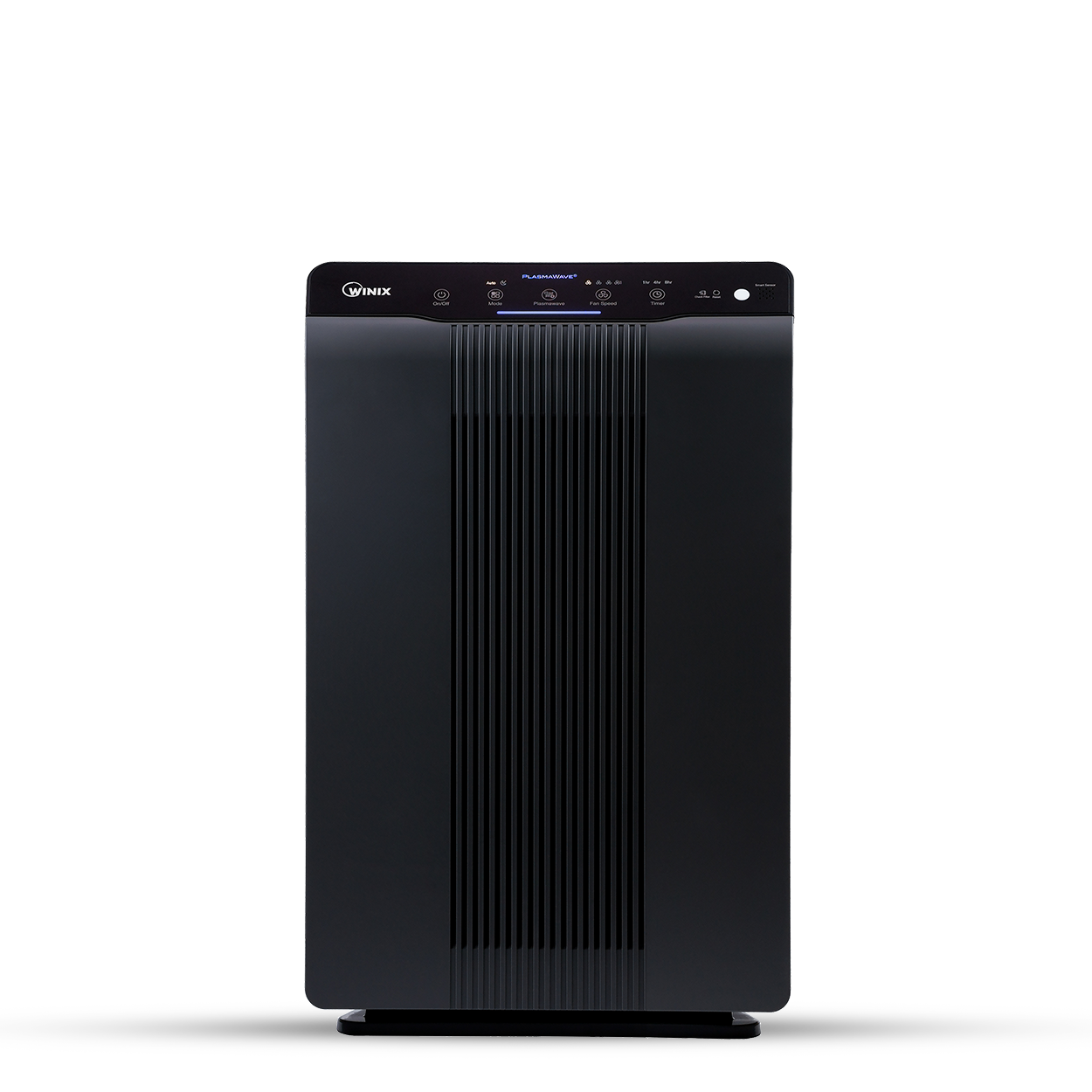
Best for Large, Open-Concept Spaces:
New homes often feature large, open-concept living areas that require powerful air purifiers to effectively circulate and clean the air.
- Alen BreatheSmart 75i (with Fresh Filter): This unit is designed for large spaces, capable of covering up to 1,300 square feet. When paired with the Fresh Filter, it combines a powerful fan with a filter containing over 2 pounds of activated carbon, making it effective for both particulate and gaseous pollutants in expansive areas. Its quiet operation and sleek design also make it a good fit for modern homes.
When choosing among these options, consider the specific size of your rooms, the severity of VOC off-gassing you anticipate, and your budget for both the initial purchase and long-term filter replacements. Remember, the goal is to create a healthier indoor environment where you can truly breathe easier.
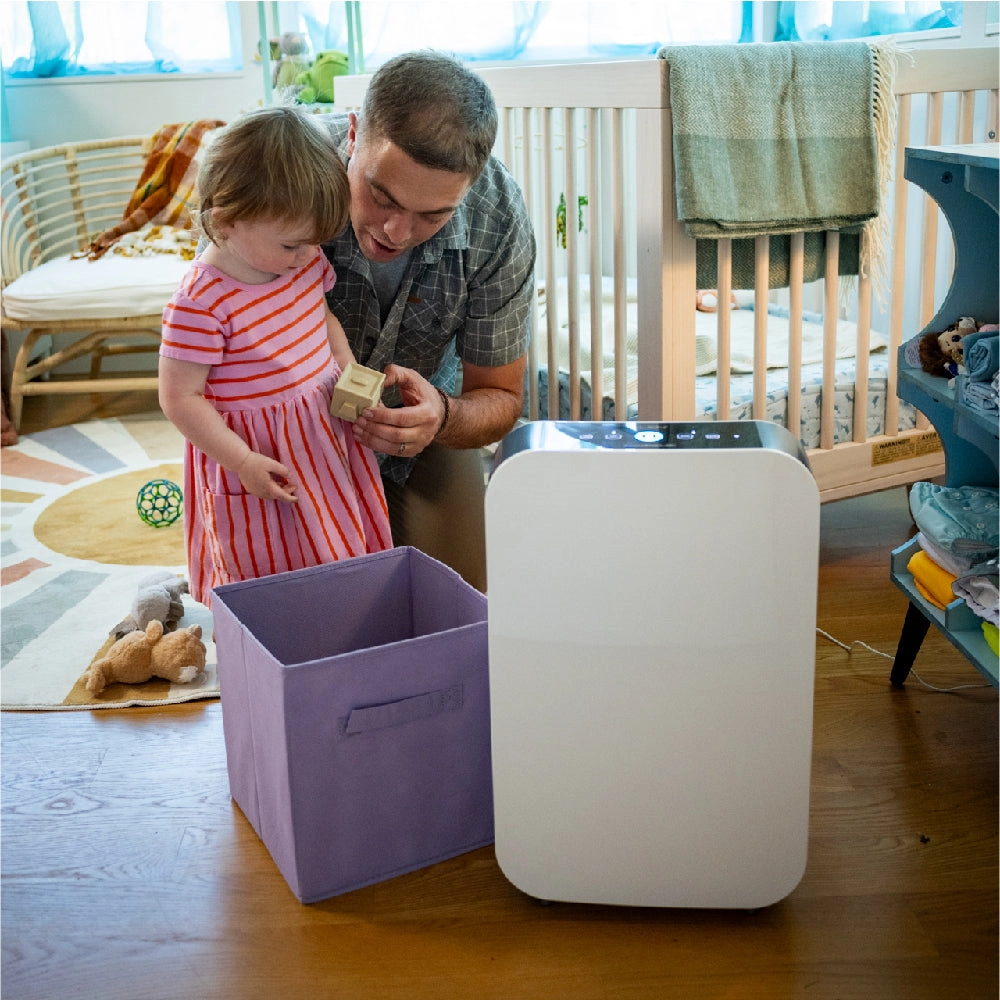
Conclusion: Breathe Easier in Your New Space
The journey of moving into a new home is filled with excitement and anticipation. However, it’s essential to acknowledge and address the invisible challenge posed by Volatile Organic Compounds (VOCs) that contribute to that distinctive “new home smell.” These chemicals, off-gassing from various building materials and furnishings, can significantly impact indoor air quality and pose potential health risks.
Fortunately, creating a healthier living environment is achievable through a strategic, three-pronged approach:
- Source Control: Making informed choices about low-VOC materials and furnishings is your first and most impactful line of defense.
- Ventilation: Diluting indoor air pollutants by regularly airing out your home and new items is crucial for reducing VOC concentrations.
- Air Purification: Investing in the right air purifier, specifically one with a substantial activated carbon filter, provides a continuous, 24/7 solution to capture and neutralize remaining VOCs.
By combining these strategies, you can transform your new house into a truly healthy and comfortable home. Investing in a high-quality air purifier for VOCs is not just about cleaner air; it’s an investment in your family’s long-term health, well-being, and peace of mind in your new space. Breathe easier, knowing you’ve taken proactive steps to ensure the air you and your loved ones breathe is as pure as your new beginnings.

